Landscape Architecture Blends into Natural Surroundings Creates a Camouflage Effect
WOMhouse, (Word of Mouth House) Architects designed a “chameleon villa” in a modernist landscape architectural style on the southwest coast of Bali. Landscape architecture are when buildings and residences appear like they are a part of the surroundings, sometimes seemingly disappearing or even emerging from the land like a natural growth.
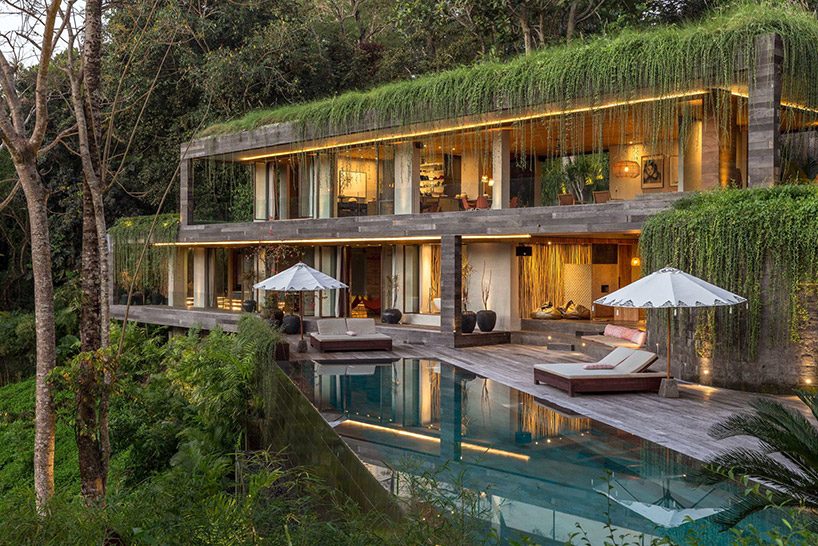
The villa overlooks a dense forest with a river that flows beneath and robust greenery surrounding it on all sides including it’s roof.
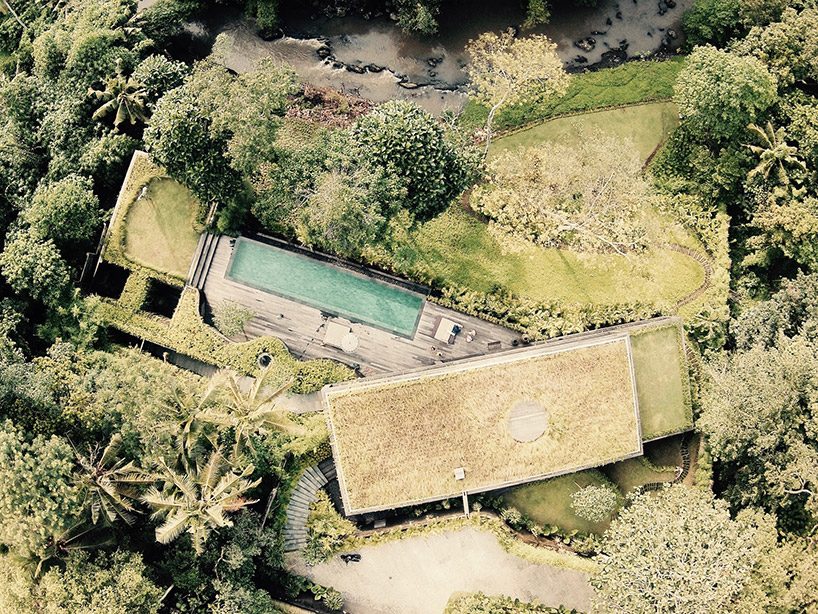
WOMhouse combined landscape architecture with traditional balinese architecture for this design where the buildings are placed on different levels of land with each one designated for a specific purpose. The buildings are rectangular and stacked upon one another with an outer frame protecting the interior and providing insulation.
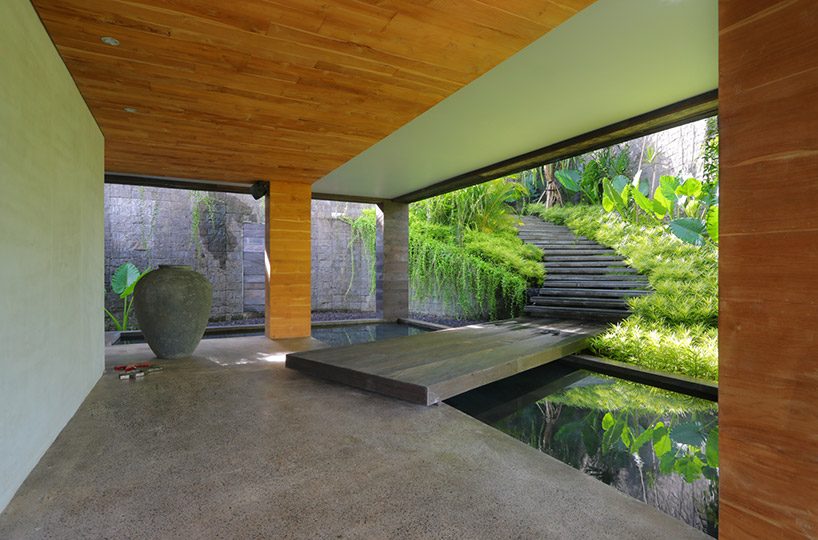
Between the buildings small gardens and other foliage emerges between the gaps and spaces. This style of architecture allows for uninterrupted views of the forest and the possibility for more camouflage by the natural landscape. In addition to camouflaging, the vegetation on top of the roof provides a cooling effect and assists in rainwater collection.
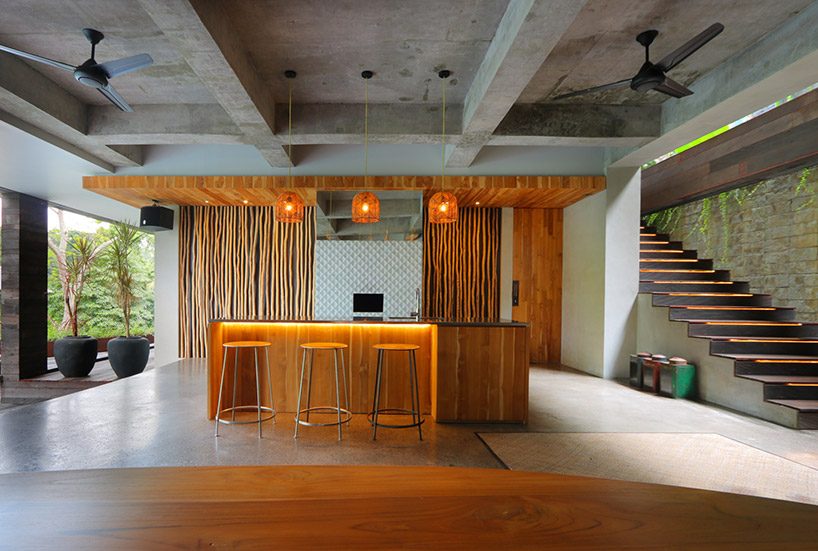
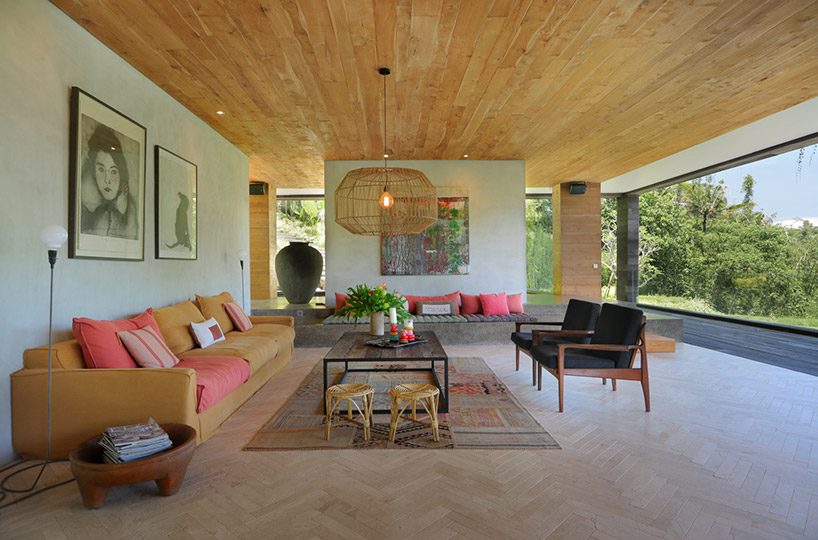
Communal spaces in the villa are open and face towards the outside, while private areas such as bedrooms are enclosed towards the inside.
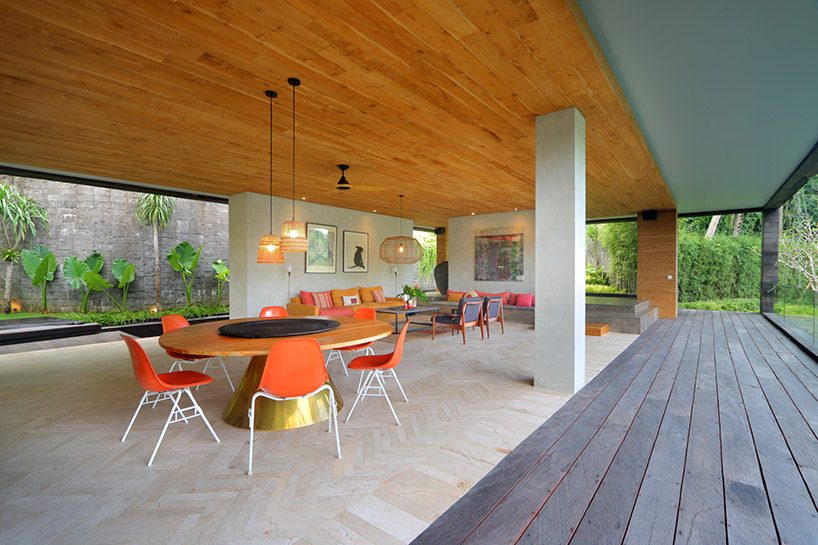
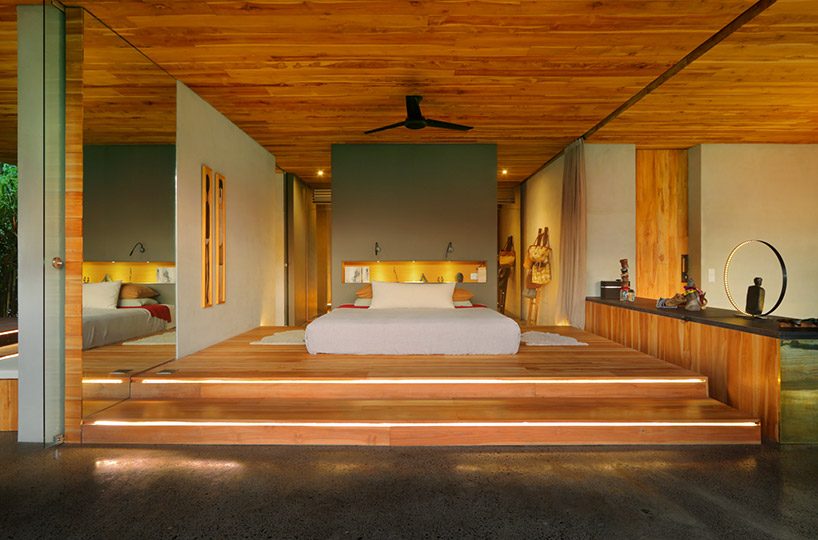
Not only does this villa appear to be a part of its environment, but it was also designed to protect the environment it was built in.
The architects used a environmentally-friendly system for the design, completing the home with a material palette of natural and locally sourced materials, solar panels and water recycling techniques for garden irrigation.
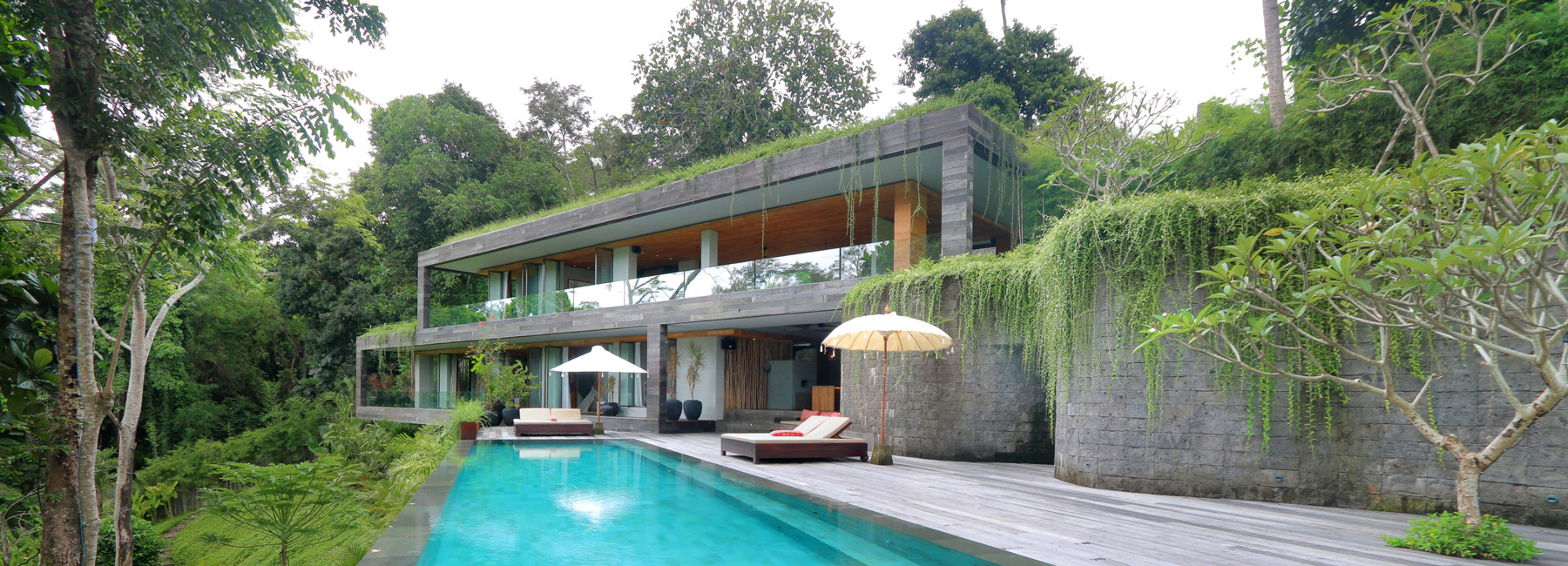
Landscape architecture combines modernist and organic styles simultaneously by choosing eco-friendly design to the exterior and modern design to the interior with an emphasis on green living approaches in the design functionality.